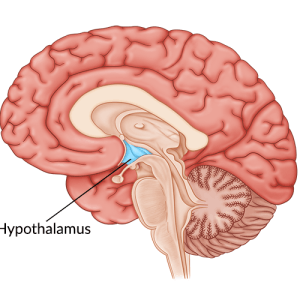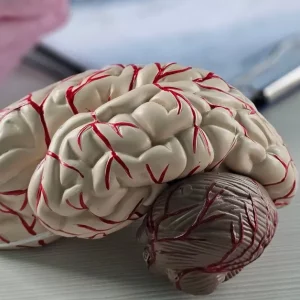Anoxic brain injury is a serious condition that occurs when the brain is deprived of oxygen. This lack of oxygen can lead to damage or death of brain cells. Depending on the location and severity of damage, anoxic brain injury can result in a range of cognitive, physical, and emotional impairments.
In this comprehensive guide, we’ll explore the causes, symptoms, diagnosis, treatment, and recovery process associated with anoxic brain injury. Use the links below to jump directly to any section of this article:
- What Is Anoxic Brain Injury
- Causes
- Symptoms
- Diagnosing Anoxic Brain Injury
- Treatment and Rehabilitation
- Recovery
- Living With Anoxic Brain Injury
- Prevention
What is Anoxic Brain Injury?
Anoxic brain injury is a type of brain injury that happens when the brain doesn’t receive any oxygen. The brain is very sensitive to oxygen deprivation. In fact, consciousness is often lost within one minute of oxygen disruption, while just three minutes of oxygen deprivation may result in brain cell damage.
Although it’s similar to anoxic brain injury, hypoxic brain injury occurs when the brain still receives some oxygen, but not enough for brain cells to function properly. However, both fall under the umbrella of hypoxic-anoxic brain injury.
Every part of the body needs oxygen to function, but the brain is especially vulnerable to oxygen deprivation. If blood circulation and oxygen supply are fully restored to the brain within three minutes, individuals are likely make a complete recovery. However, the longer the brain goes without oxygen, the more extensive the damage may be.
Causes of Anoxic Brain Injury
Several situations can lead to anoxic brain injury. Typically, blood carries oxygen and other nutrients throughout the body, including to the brain. Therefore, an anoxic brain injury is likely to occur if the blood is unable to carry a sufficient amount of oxygen or if the blood supply to the brain is disrupted.
An anoxic brain injury may also occur if individuals are unable to inhale enough oxygen from their environment. This is the case in situations such as drowning or choking.
Below are several of the most common causes of anoxic brain injury:
- Cardiac arrest: When the heart stops beating, it can’t pump oxygenated blood to the brain.
- Stroke: A stroke that blocks blood flow to the brain can cause anoxia in the affected area.
- Near drowning: Drowning or near-drowning accidents prevent oxygen from reaching the lungs and, consequently, the brain.
- Choking: Obstruction of the airway can cut off the oxygen supply.
- Carbon monoxide poisoning: Carbon monoxide displaces oxygen in the blood, effectively starving the brain of oxygen.
- Drug overdose: Certain drugs can suppress breathing and lead to anoxia.
- Complications during surgery: Though rare, anesthesia complications or surgical errors can interrupt oxygen flow to the brain.
- Traumatic brain injury: Traumatic brain injury (TBI) can sometimes disrupt blood flow within the brain.
Other situations, such as an electrical shock, strangulation, or smoke inhalation may also result in anoxia. Since brain damage may occur quickly, it is critical to restore the oxygen supply to the brain as soon as possible by seeking immediate medical attention.
Symptoms of Anoxic Brain Injury
Depending on the cause and duration of anoxia, the whole brain may be affected (global anoxic brain injury), or only specific areas of the brain may sustain damage. For example, a parietal lobe stroke will only affect the oxygen supply to the parietal lobe, so damage will only occur in that area. On the other hand, the entire brain is often affected by conditions such as cardiac arrest, where oxygenated blood cannot reach the brain.
Signs that an individual may be experiencing anoxia or hypoxia include:
- Confusion or difficulty concentrating
- Headaches
- Dizziness or light-headedness
- Poor coordination
- Loss of consciousness
- Skin turning blue
If oxygen deprivation lasts longer than a few minutes, longer-lasting symptoms of anoxic brain injury may occur. These can vary depending on the severity of the injury and the areas of the brain affected. Some common symptoms include:
- Loss of consciousness: This can range from brief fainting to a prolonged coma.
- Cognitive impairments: Problems with memory, attention, concentration, and decision-making.
- Physical impairments: Weakness, paralysis, tremors, difficulty with coordination and balance.
- Sensory impairments: Vision or hearing problems, loss of sensation.
- Communication difficulties: Problems with speech, understanding language, reading, or writing.
- Emotional and behavioral changes: Mood swings, irritability, anxiety, depression, personality changes.
Addressing these symptoms in a timely manner can provide the optimal chances of recovery.
Diagnosing Anoxic Brain Injury
Certain areas of the brain are more vulnerable to anoxia. This includes the cerebral cortex (particularly the parietal and occipital lobes), the hippocampus (essential for memory) and the basal ganglia and cerebellum (which play a role in controlling movement). These areas may be examined particularly closely when diagnosing anoxia.
Diagnosing anoxic brain injury involves a combination of:
- Medical history and physical examination: involve gathering information about the events leading up to the injury and assessing the individual’s current physical and neurological state
- Neurological tests: may examine cognitive function, reflexes, coordination, and sensory perception
- Imaging studies: CT scans or MRIs can reveal areas of brain damage caused by oxygen deprivation
- Electroencephalogram (EEG): measures brain activity and can help identify abnormalities
These tests can allow doctors to further understand the location and severity of brain damage that may have occurred. Furthermore, analyzing the results of these tests can allow doctors to better predict the individual’s recovery prognosis.
Treatment and Rehabilitation
Immediate treatment for anoxic brain injury focuses on stabilizing the patient and minimizing further damage. This may involve:
- Respiratory support: Providing oxygen or mechanical ventilation to ensure adequate oxygenation.
- Medications: To control blood pressure, reduce swelling in the brain, and prevent seizures.
- Therapeutic hypothermia: Cooling the body to a lower temperature may reduce oxygen demands and help protect the brain from further damage in some cases.
Once the patient is stable, it is highly recommended to begin rehabilitation as soon as possible. This crucial phase of recovery may include:
- Physical therapy: To improve strength, coordination, balance, and mobility.
- Occupational therapy: To regain skills needed for daily living, such as dressing, eating, and bathing.
- Speech therapy: To address cognitive changes and communication difficulties.
- Cognitive rehabilitation: To improve memory, attention, and problem-solving abilities.
- Psychological counseling: To help patients and families cope with the emotional and psychological impact of the injury.
Pursuing therapy early on in the recovery process often results in the best outcomes. Unfortunately, recovery after an anoxic brain injury is often slower than that of other types of brain injuries. However, there is always hope for improvement.
Recovery from Anoxic Brain Injury
Recovery from anoxic brain injury is a long and challenging process. The extent of recovery depends on many factors, including:
- Severity of the injury: The longer the brain is deprived of oxygen, the greater the potential damage.
- Age and overall health: Younger individuals and those in good health prior to the injury tend to have better outcomes.
- Access to rehabilitation: Early and intensive rehabilitation is crucial for maximizing recovery.
- Support system: Strong support from family and friends can significantly impact the recovery journey.
Recovery is often gradual and may continue for years. Some individuals make significant progress and regain a high level of independence, while others experience lasting impairments.
Living with Anoxic Brain Injury
Living with anoxic brain injury can present ongoing challenges for both the survivor and their family. It’s important to:
- Be patient: Expect ups and downs on the recovery journey; even slow progress is still progress.
- Stay positive: Focus on celebrating small victories and maintaining hope.
- Seek support: Connect with local or online support groups, therapists, and other resources.
- Adapt to changes: Work with an occupational therapist to learn new strategies for daily tasks and adapt the environment to accommodate any lasting impairments.
- Advocate: Don’t be afraid to ask for help and advocate for your needs.
If you or someone you love has experienced an anoxic brain injury, there are many resources available to help:
- The Brain Injury Association of America: Provides information, support, and resources for individuals with brain injuries and their families.
- The Shepherd Center: A rehabilitation hospital specializing in brain and spinal cord injury.
- Headway: The Brain Injury Association: A UK-based charity that provides a wide range of information and support regarding brain injuries.
Talk with your doctor or therapist for further recommendations.
Preventing Anoxic Brain Injury
While not all causes of anoxic brain injury are preventable, there are steps to reduce the risk:
- Learn CPR: Knowing CPR can help save a life in the event of cardiac arrest.
- Prevent choking: Chew food thoroughly and supervise young children while they eat.
- Install carbon monoxide detectors: These can alert individuals to the presence of this dangerous gas.
- Seek prompt medical attention: If you or someone nearby experiences symptoms of a stroke or heart attack, seek immediate medical attention.
- Practice water safety: Supervise children around water and wear life jackets when boating.
Following these simple recommendations can prevent or lessen the impact of an anoxic brain injury.
Hope for the Future
While anoxic brain injury is a serious condition, it’s important to remember that there is hope for recovery. With the right treatment, rehabilitation, and support, many individuals are able to make significant progress and live fulfilling lives.
Research continues to advance our understanding of brain injury, and new treatments are consistently being studied to improve outcomes.









